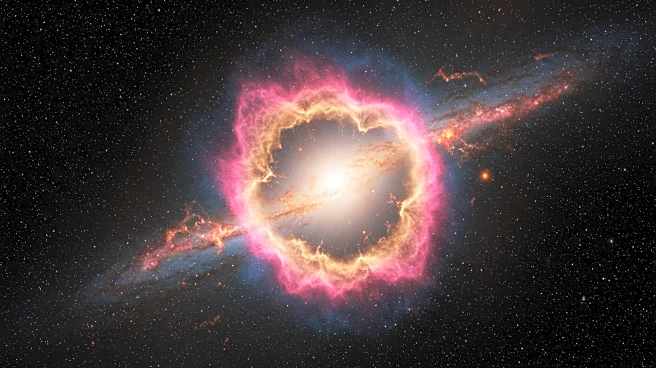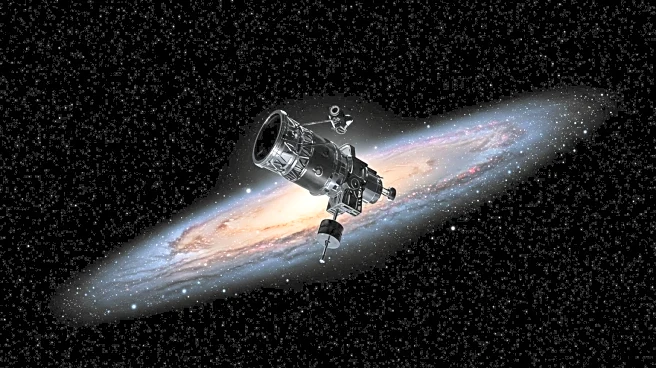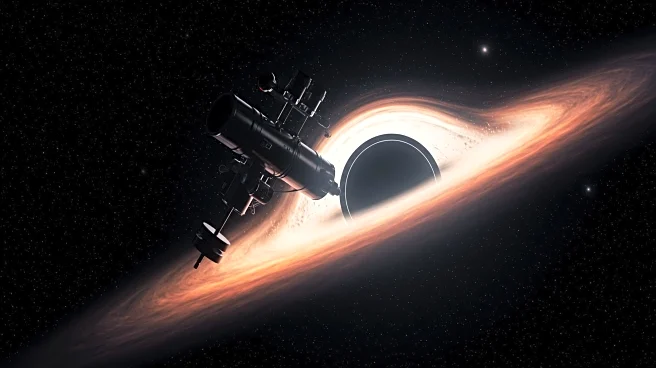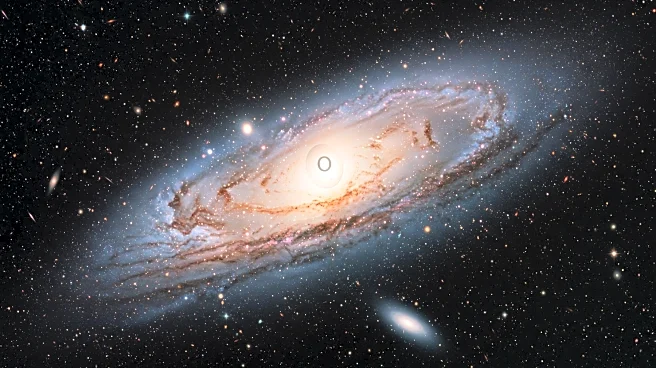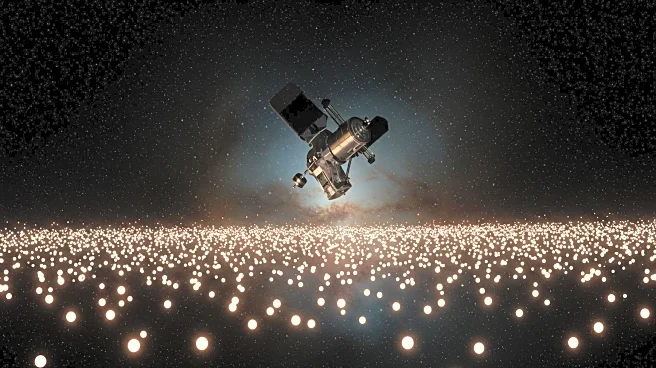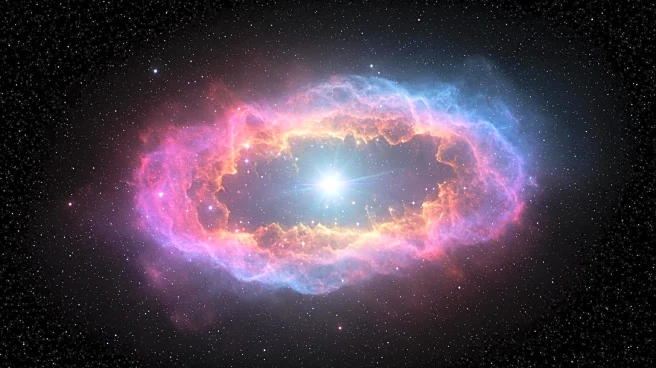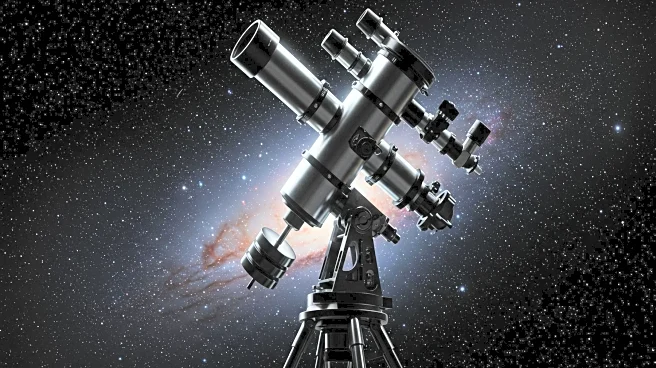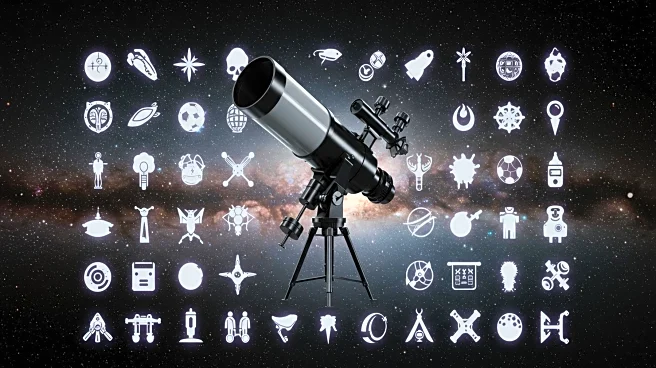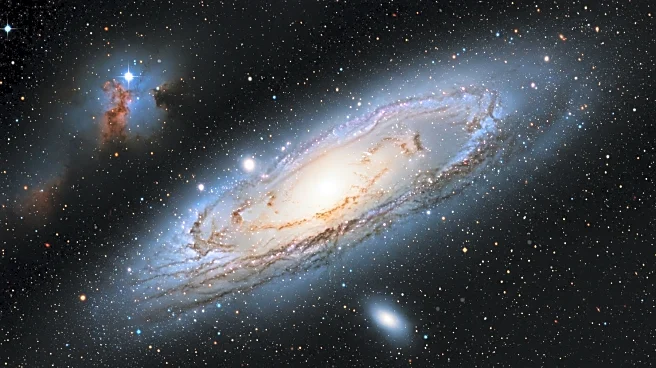What's Happening?
Astronomers from the University of Wisconsin-Madison and other institutions have conducted a study using data from the James Webb Space Telescope (JWST) and the Hubble Space Telescope (HST) to explore the properties of a massive and ancient galaxy known as SMILES-GS-191748, nicknamed 'Eridu.' The galaxy, located at a redshift of 2.675, is believed to contain an old stellar population formed when the universe was young. The study, published on the pre-print server arXiv, reveals that Eridu is already mature despite the universe being only about 2.5 billion years old at the time. The galaxy's mass is estimated to be approximately 900 billion solar masses, with a star formation rate of less than one solar mass per year over the last 100 million years. The research suggests that Eridu experienced rapid star formation and quenching early in its history.
Why It's Important?
The study of Eridu provides valuable insights into the formation and evolution of ancient galaxies, contributing to our understanding of cosmic history. By analyzing Eridu's properties, astronomers can better comprehend the processes that lead to galaxy formation and maturation in the early universe. The findings also highlight the role of high-density environments, such as the massive protocluster 'Drishti,' in facilitating rapid mass assembly and quenching. This research enhances our knowledge of galaxy evolution and the conditions that prevailed in the universe's formative years, offering a glimpse into the complex dynamics of cosmic structures.
What's Next?
Future studies are expected to focus on Eridu's morphology, environment, dynamics, and spatially resolved properties to gain a comprehensive understanding of its formation and evolution. These investigations will provide additional insights into the galaxy's puzzling birth and development, potentially revealing connections to other ancient cosmic phenomena. Continued observations and analyses will help refine models of galaxy formation and contribute to the broader field of astrophysics.
